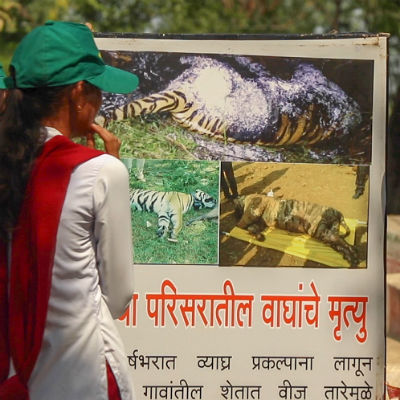Tiger education on the move
TIGER EDUCATION ON THE MOVE
At a high school in Bothali, in the buffer zone of Tadoba Andhari Tiger Reserve, 700 children are learning about human-wildlife co-existence. The Mobile Education Unit of Born Free’s Living with Tigers programme is making its regular visit.
Mobile Education Units have been educating communities across the Satpuda area of central India since 2005. Run by Living with Tigers’ partner Bombay Natural History Society (BNHS), the units visit 80-100 schools around 10 tiger reserves and several sanctuaries to educate children about wildlife conservation.
The children are asked to raise their hand if they’ve ever seen a tiger – nearly three quarters of them have.
“The students see tigers around farms and villages,” explains Sanjay Karkare, who heads up BNHS’ Living with Tigers activities. “The children are afraid of tigers, but they do want tigers in their area because they believe the tiger is their national pride. They are aware they live in an area that is known around the world for its tigers.”
Today’s lecture is on alternatives to using electrified fences to protect crops. Many farmers in Satpuda divert electricity straight from power grids to charge electric fences around their fields. However, this has led to the death of many wild animals, including tigers.
The lecture pulls no punches. The children are shown graphic images of dead tigers and wild boar, and are told that people have also been killed in this way. BNHS believes that if the children are taught about conflict issues like mains-powered electric fencing, they will encourage their parents to protect their crops in other ways.
As well as visiting schools, the Mobile Education Unit holds a nature camp every year for up to 900 children with jungle trails, films, exhibitions and lectures. It also holds training programmes for students, teachers, women, tour guides and staff employed in the government’s Forest Department.
BNHS estimates the Mobile Education Units have created environmental awareness among more than 50,000 students since 2005.
“Education is so important for the long-term protection of tigers, and wildlife,” Karkare adds. “If we can educate the young on the importance of wildlife conservation, they will want to make sure tigers remain safe.”

